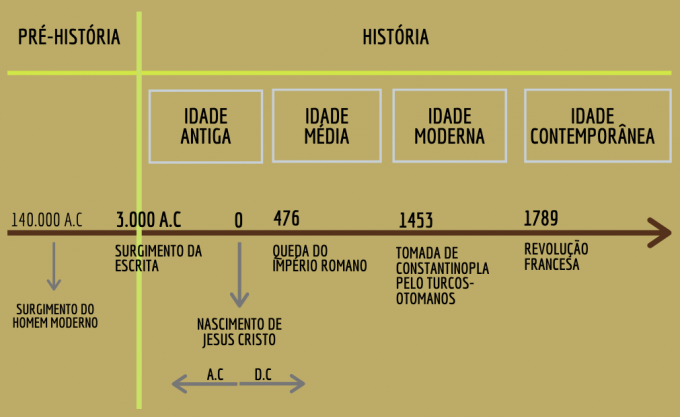THE Roman Civilization it built the greatest empire that existed during antiquity, dominating Western Europe, North Africa, Egypt, Asia Minor, Palestine, and Mesopotamia.
Appeared from the city of Rome, founded probably in 753 a. C., and being located in the Italian Peninsula, the Roman Civilization ended with the fall of the Western Roman Empire in 476 d. Ç.
The Eastern Roman Empire, also known as Byzantine Empire, remained in operation until 1453, when the Ottoman Turks conquered the city of Constantinople, capital of the Empire.
The political history of Roman Civilization is divided into three phases: Monarchy, which goes from the 8th century BC. Ç. until probably the VI century BC. Ç.; Republic, between the VI century a. Ç. to 27 a. Ç.; and Empire, from 27 to. Ç. to 476 d. Ç. Let's get to know the main features of the Roman Monarchy?
Monarchy (sec. VIII a. Ç. - Via. Ç.)
Initial period of formation of the Roman Civilization, the Monarchy was constituted after the processes of occupation of the region of the Italian Peninsula. The Romans were descendants of the Italians, Indo-European people who occupied the region around 2000 BC a., being divided mainly between the Latins, the sabinos and the sanmitas. There were also in the Italian Peninsula the Gauls, in the north, the Etruscans, in the center-north, and the Greeks, in the south, where Magna Graecia was constituted.
The foundation of Rome, on the banks of the Tiber River and near the Tyrrhenian Sea, was attributed to the twins Romulus and Remus, with Romulus being the first king of Rome. The information that historians have about the period also indicates the existence of six more kings, two of them Sabinos, one Roman and three Etruscans.
Kings handled functions related to justice, religion, and war. There was also an organ supporting the king for him to rule called the Senate. O Senate it was a council formed by the heads of the various clans, family groups, where political matters were debated.
Society at the time was formed by the patricians, the class of large landowners; by the commoners, free men who did not descend from patrician families; the clients, also free men who provided services to the patricians, standing above the commoners; and slaves, formed by indebted people and prisoners of war.
The existence of several conflicts between the patricians and the Etruscan kings, considered as foreigners, led the patricians to overthrow the last of the kings in 509 BC. C., Tarquinio the Superb, initiating the Republic.
Take the opportunity to check out our video lesson related to the subject:


